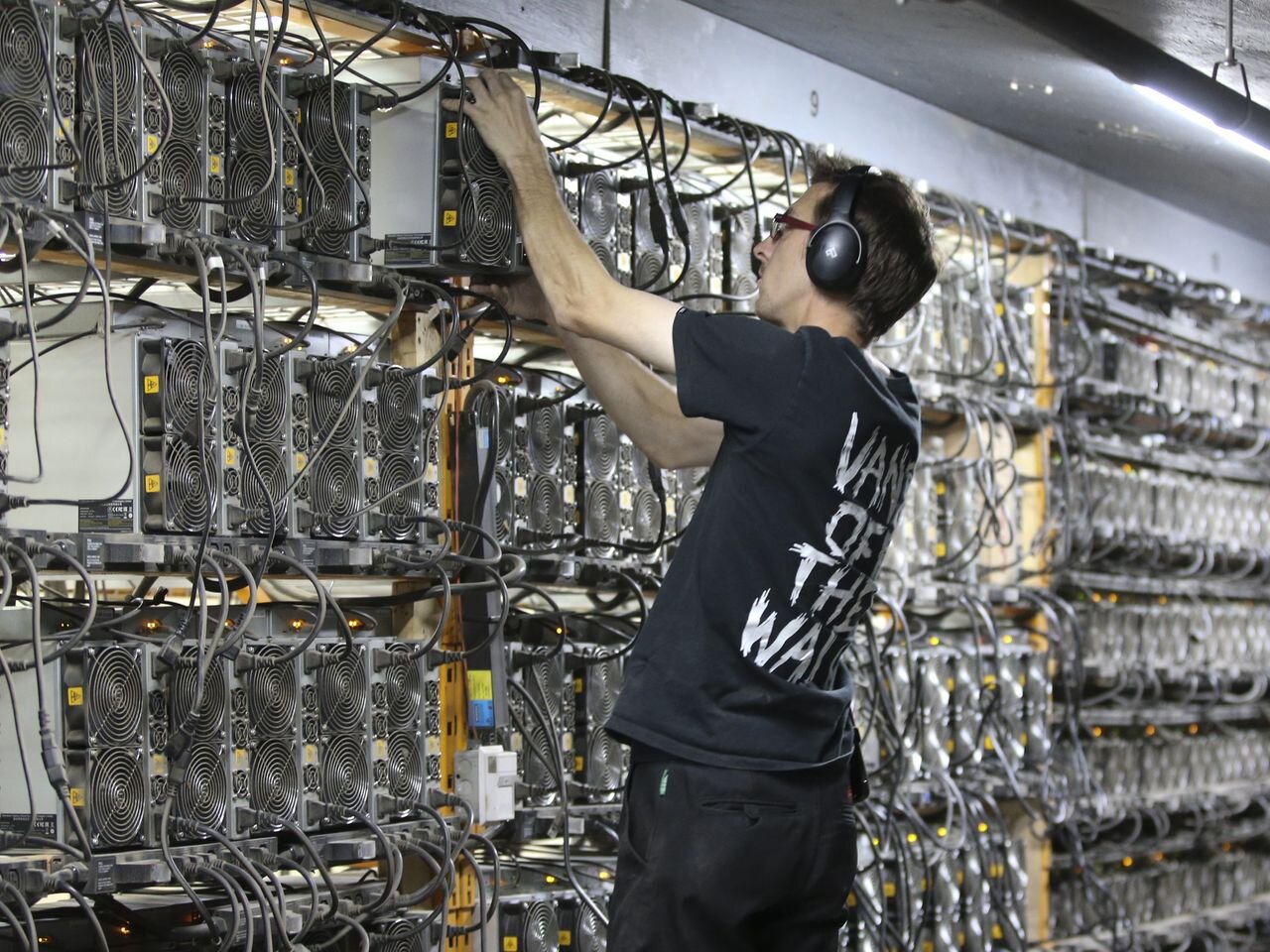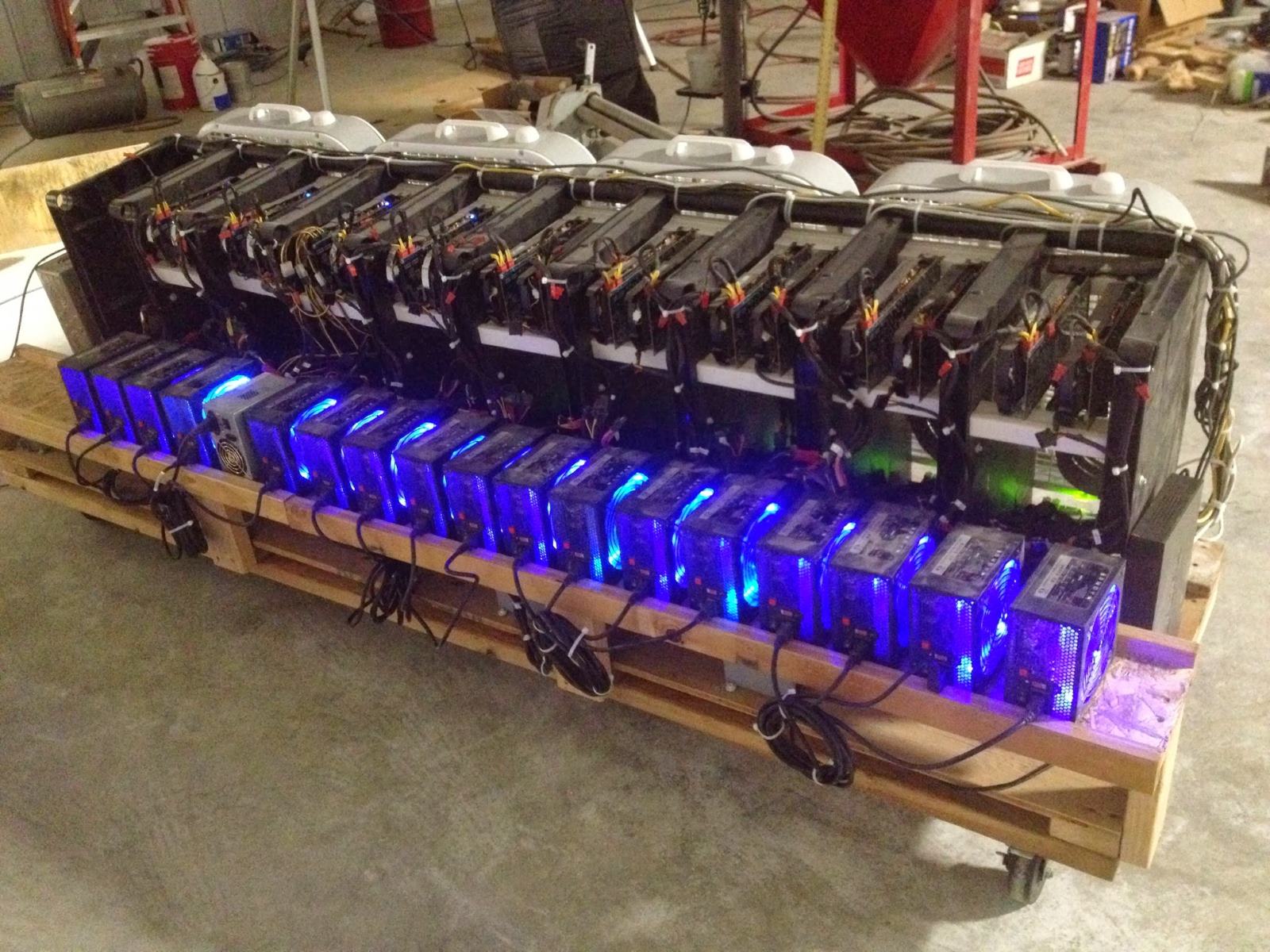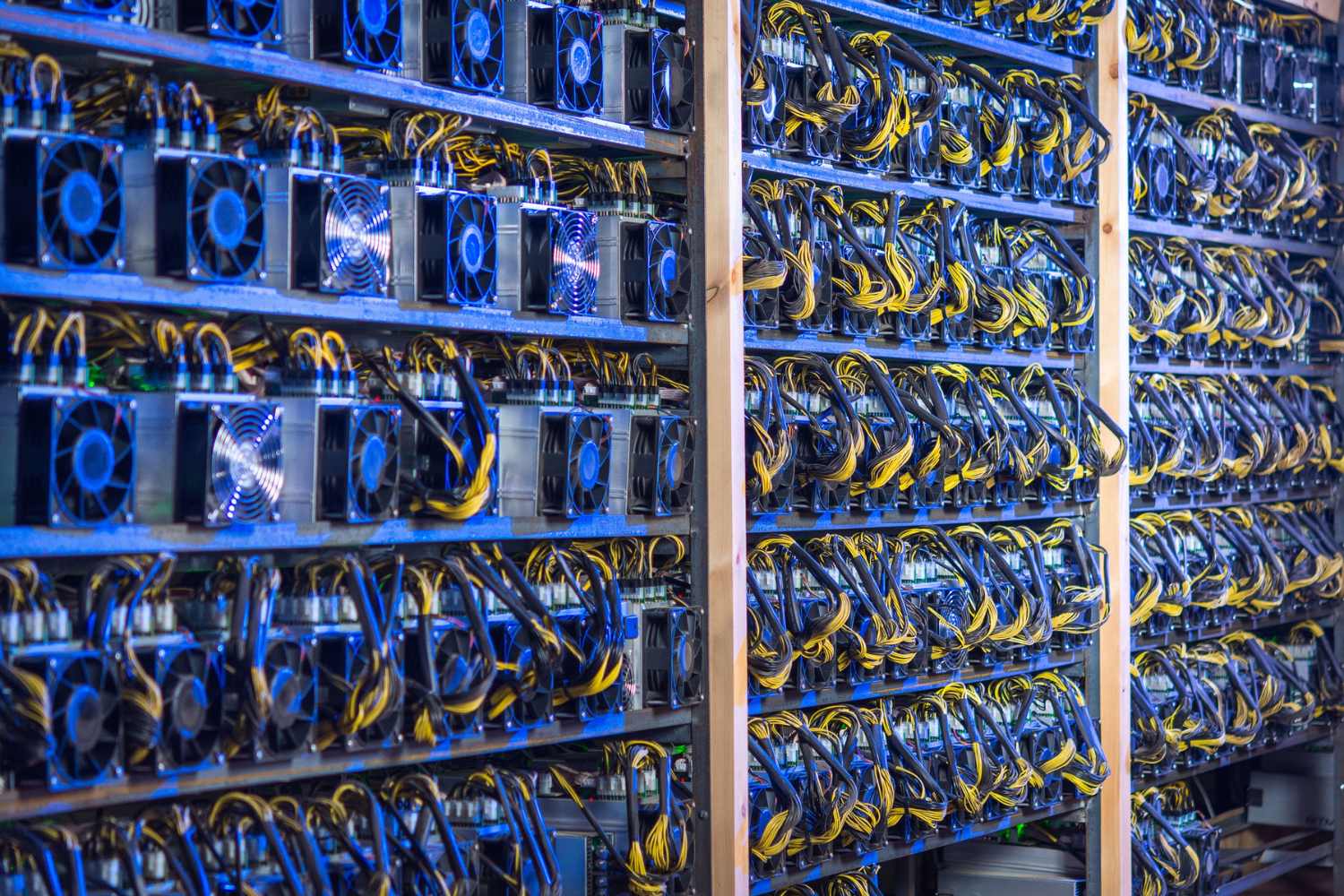Introduction
Cryptocurrency mining has emerged as a lucrative venture in recent years, with individuals and businesses investing in powerful computer systems to solve complex mathematical puzzles and earn digital currencies like Bitcoin. However, this highly profitable activity is not without its challenges. One of the major issues associated with crypto mining is the noise it generates.
The noise factor is often overlooked when discussing crypto mining, but it is a significant concern that can have a profound impact on both the miners and their surroundings. The high-powered equipment used for mining, combined with the ventilation and cooling systems necessary to maintain an optimal operating temperature, can generate a considerable amount of noise.
As mining equipment runs 24/7 to maximize profits, the noise generated can become a source of irritation and discomfort for those working or living in close proximity to the mining operations. This has led to increased scrutiny from both regulatory bodies and the general public.
In this article, we will delve into the various factors contributing to the noise generated by crypto mining. We will explore how mining equipment and its ventilation and cooling systems play a role in noise generation. Additionally, we will examine the impact of this noise on miners and the surrounding environment. Finally, we will discuss the noise regulations and potential solutions that can help mitigate this issue.
By gaining a deeper understanding of the noise generated by crypto mining, we can begin to address this significant challenge and safeguard the well-being of the mining community and those who are affected by the noise pollution.
The Noise Factor of Crypto Mining
Crypto mining involves the use of powerful computers equipped with specialized hardware to solve complex mathematical algorithms. As these algorithms are solved, new blocks are added to the blockchain, and miners are rewarded with digital currencies. However, this intensive computational process generates a substantial amount of noise.
The noise generated during crypto mining is primarily due to two factors: the mining equipment itself and the ventilation and cooling systems necessary to prevent the equipment from overheating.
The mining equipment, known as ASIC (Application-Specific Integrated Circuit) miners, consists of multiple high-powered processors and fans. These fans are responsible for cooling down the ASIC miners, keeping them at an optimal operating temperature. However, the fans produce a significant amount of noise as they work continuously to dissipate the heat generated by the mining process.
In addition to the noise generated by the mining equipment, the ventilation and cooling systems contribute to the overall noise levels. As the mining equipment generates heat, it needs to be constantly cooled down to maintain its efficiency. This is achieved through the installation of powerful fans and ventilation systems, which blow out hot air and bring in cool air. However, these systems also produce a considerable amount of noise, adding to the overall sound pollution.
The noise levels associated with crypto mining operations can vary depending on various factors such as the number of mining rigs, the type of cooling system used, and the facility’s design. In large-scale mining operations, where numerous ASIC miners are operating simultaneously, the noise can reach levels that are disruptive and uncomfortable for those in the vicinity.
Furthermore, the constant noise from crypto mining can have adverse effects on the miners themselves. Prolonged exposure to high noise levels can lead to hearing loss, increased stress levels, and difficulty concentrating. This can ultimately impact the miners’ productivity and overall well-being.
In the next section, we will explore the mining equipment and its role in generating noise in more detail, shedding light on the specific components that contribute to the overall noise levels in a mining operation.
Mining Equipment and Noise Generation
The mining equipment used in cryptocurrency mining operations plays a crucial role in the generation of noise. These mining devices, known as ASIC (Application-Specific Integrated Circuit) miners, are specifically designed to solve complex mathematical algorithms and earn digital currencies like Bitcoin.
ASIC miners consist of several components that contribute to the overall noise levels. Firstly, the processors inside the mining equipment generate heat as they perform intensive calculations. To prevent overheating, fans are employed to cool down the processors and maintain the optimal temperature. However, these fans are often the primary source of noise production from the mining equipment.
The fans in ASIC miners are high-powered and operate at high revolutions per minute (RPM) to ensure efficient cooling. As a result, they generate a significant amount of noise. The faster the fans spin, the louder the noise they produce. This noise level can be further exacerbated when multiple ASIC miners are housed in the same location, as the cumulative noise from multiple fans adds up.
Additionally, the construction and design of the mining equipment can determine the noise levels. The materials used, the fan placement, and the overall design of the equipment can all impact the noise generated. Manufacturers are continuously working on improving the design to reduce noise production, but it remains a challenge due to the high computational power needed and the cooling requirements of the devices.
To address the noise issue, some miners opt for soundproof enclosures or specially designed mining rigs that minimize noise emissions. These enclosures or rigs are constructed with materials that absorb or dampen sound, reducing the overall noise levels. While this can help mitigate the noise impact on the immediate surroundings, it may also affect the cooling efficiency and increase the risk of overheating.
It is important for crypto miners to find a balance between noise reduction and maintaining optimal operating conditions for their mining equipment. Striking this balance will not only ensure efficient mining operations but also minimize the noise disturbance for those around the mining facility.
In the next section, we will delve into the ventilation and cooling systems used in crypto mining operations and their contribution to noise generation.
Ventilation and Cooling Systems
In crypto mining operations, maintaining optimal operating temperatures is vital for the efficiency and longevity of the mining equipment. As a result, ventilation and cooling systems are essential components in mining facilities. These systems help dissipate the heat generated by the mining equipment and prevent overheating. However, they also contribute to the overall noise levels associated with crypto mining.
Ventilation systems in mining facilities consist of powerful fans that extract hot air from the location and bring in fresh, cool air to maintain a suitable temperature. The fans used in these systems are similar to those employed in cooling the mining equipment, which means they operate at high RPMs and produce a substantial amount of noise.
The noise generated by the ventilation systems can be further amplified by the design and layout of the mining facility. In some cases, facilities have large exhaust systems or ducts that are responsible for directing the hot air out of the building. These components can create additional noise as the air is forced through them.
Efforts have been made to mitigate the noise impact of ventilation and cooling systems in mining operations. Soundproof enclosures or specialized arrangements can be utilized to minimize the noise transmission. These enclosures are designed to absorb or dampen sound waves, reducing the overall noise levels from the ventilation systems.
While noise reduction measures can help, it is essential to maintain adequate airflow and cooling efficiency within the mining facility. Inadequate cooling can lead to increased operating temperatures, lower mining efficiency, and potential damage to the equipment. Striking a balance between noise mitigation and cooling effectiveness is crucial for successful mining operations.
Furthermore, advancements in cooling technology, such as liquid cooling systems, have been explored as potential solutions to reduce noise and improve cooling efficiency. These systems use coolants or liquids to transfer heat away from the mining equipment, resulting in quieter operation and improved temperature regulation.
It is important for mining operators to consider the noise implications of ventilation and cooling systems when designing or optimizing their mining facilities. By implementing effective noise reduction strategies and exploring innovative cooling solutions, miners can minimize the noise impact on their operations and create a more conducive working environment.
In the next section, we will delve into the impact of noise on miners and the surrounding environment.
Noise Impact on Miners
The constant exposure to high noise levels in crypto mining operations can have various impacts on the miners themselves. Prolonged exposure to excessive noise can lead to several physical and psychological issues that affect their overall well-being and productivity.
One of the primary concerns is the potential for hearing damage. The loud noise generated by the mining equipment and ventilation systems can reach levels that exceed the recommended safety thresholds. Miners who are exposed to these high noise levels for extended periods without adequate hearing protection are at risk of developing noise-induced hearing loss. This can be a long-term and irreversible condition that significantly impacts their quality of life.
In addition to the physical impact, noise pollution can also contribute to increased stress levels among miners. The continuous noise can create an environment of constant annoyance and discomfort, which can lead to heightened levels of stress and frustration. This chronic stress can affect concentration, decision-making abilities, and overall mental well-being.
Furthermore, the noise generated by mining operations can disrupt sleep patterns. Many mining facilities run 24/7 to maximize profits, which means that miners are often exposed to noise during their rest periods. The constant noise can interrupt their sleep, leading to sleep disturbances and fatigue. Lack of quality sleep can have a negative impact on miners’ physical health and cognitive functioning.
Miners already face a demanding and mentally intensive job, and the addition of excessive noise can further hinder their performance and efficiency. The distractions caused by the noise can make it challenging to concentrate on solving complex algorithms and maintaining optimal mining operations. This can result in a decrease in productivity and potential financial losses.
Given the potential negative impacts, it is crucial for mining operators to prioritize the well-being of their miners and implement measures to minimize noise exposure. This can include providing miners with appropriate hearing protection, implementing noise reduction strategies, and creating designated rest areas where miners can escape the noise during breaks.
In the next section, we will explore the regulations surrounding noise in crypto mining operations and potential solutions to address the noise pollution issue.
Noise Regulations and Solutions
With the increasing concern over the noise pollution caused by crypto mining operations, regulatory bodies are starting to implement noise regulations to protect both miners and the surrounding communities. These regulations aim to establish acceptable noise levels and ensure compliance with noise control measures.
Depending on the jurisdiction, there may be specific noise limits set by local authorities that mining operators need to adhere to. These limits can vary based on location and the zoning regulations in place. Mining facilities are required to measure and monitor the noise levels periodically to ensure compliance with these regulations.
To address the noise pollution issue, there are various solutions that mining operators can implement. One effective measure is the use of soundproof enclosures or specially designed mining rigs. These enclosures are constructed with materials that absorb or dampen sound, reducing the overall noise levels emitted by the mining equipment and ventilation systems. Proper insulation of the mining facility can also help in minimizing noise transmission to the surrounding environment.
Another solution is the implementation of advanced cooling systems. Liquid cooling systems, for example, can provide efficient heat dissipation while operating with significantly less noise compared to traditional air cooling methods. These systems use coolants or liquids to transfer heat away from the mining equipment, resulting in a quieter mining operation.
Moreover, mining operators can offer adequate hearing protection to their miners. This can include providing high-quality earplugs or earmuffs specifically designed for noise reduction. Miners should be educated about the importance of using hearing protection and encouraged to wear them consistently during their work shifts.
Noise reduction strategies can also involve modifying the mining facility’s layout and creating designated noise-free areas. This can include relocating the ventilation systems away from the main working areas and installing sound barriers or mufflers to minimize noise transmission. Creating separate rest areas where miners can retreat from the noise during breaks can also promote better well-being and reduce the overall impact of noise on their health.
Ultimately, a combination of regulatory compliance, noise reduction technologies, and prioritizing miner well-being is crucial in addressing the noise pollution issue in crypto mining operations. By implementing comprehensive noise control measures, mining operators can minimize the negative impact of noise on miners and the surrounding environment.
In summary, noise regulations aim to establish acceptable noise levels in crypto mining operations, and mining operators have a responsibility to comply with these regulations. Implementing soundproof enclosures, advanced cooling systems, providing hearing protection, and creating designated noise-free areas are effective solutions to mitigate noise pollution and ensure the well-being of miners and those affected by the mining activities.
Conclusion
Crypto mining has become a prominent industry, but the noise generated by mining equipment and ventilation systems poses significant challenges. The noise pollution from mining operations can have adverse effects on miners and those living or working in close proximity to the mining facilities.
The noise factor in crypto mining is primarily attributed to the mining equipment itself, such as the high-powered ASIC miners and their cooling fans. Additionally, the ventilation and cooling systems used to maintain optimal operating temperatures contribute to the overall noise levels.
Miners are particularly susceptible to the negative impacts of excessive noise, including potential hearing loss, increased stress levels, sleep disturbances, and reduced productivity. Therefore, it is essential for mining operators to prioritize the well-being of miners by implementing noise reduction strategies and providing appropriate hearing protection.
Regulatory bodies play a crucial role in setting noise limits and ensuring mining operators comply with noise regulations. By establishing acceptable noise levels and monitoring compliance, authorities can help mitigate the noise pollution associated with mining operations.
Various solutions can address the noise pollution issue in crypto mining. Soundproof enclosures, advanced cooling systems, the use of hearing protection, and the creation of designated noise-free areas can all contribute to reducing noise impact. Striking a balance between noise reduction and maintaining optimal operating conditions is crucial in implementing effective solutions.
In conclusion, the noise generated by crypto mining is a significant concern that requires attention. By prioritizing noise reduction measures, promoting regulatory compliance, and safeguarding the well-being of miners, we can create a more sustainable and harmonious environment for both the mining community and the surrounding areas affected by noise pollution.

























